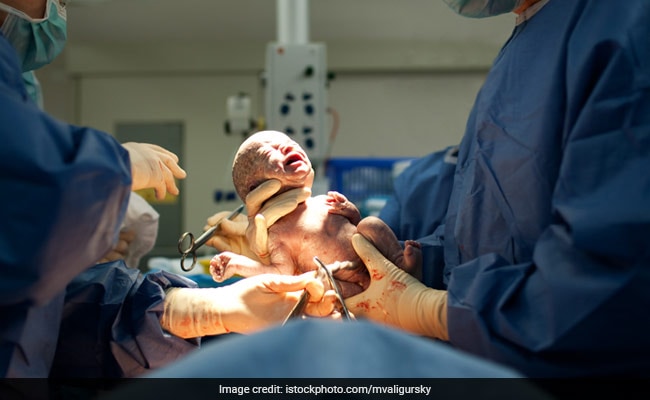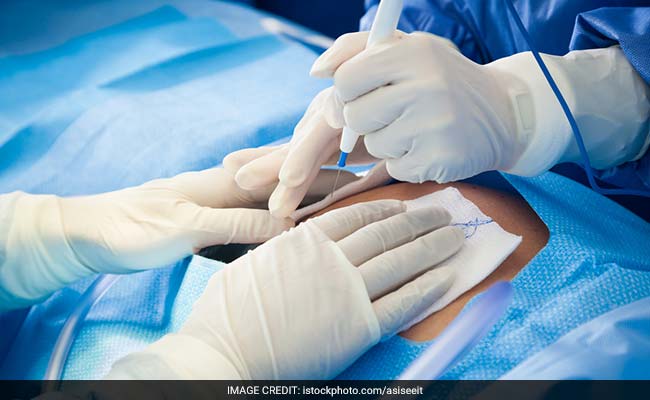Cesarean deliveries are subject to a number of myths, take a look.

Despite the increased incidence of C-section deliveries, it is still considered to be unsafe
HIGHLIGHTS
- C-section deliveries refer to the surgical technique of giving birth
- It is still considered to be unhealthy for the mother and the baby
- 70% women end up giving natural birth successfully after a C-section
Cesarean deliveries or C-section deliveries refer to the surgical technique of giving birth. It is the alternative of vaginal deliveries, usually in cases of serious complications. But this technique has gained so much popularity in the recent times that it is now the preferred choice, even amongst the healthy mothers. However, it is viewed with a suspicious eye and subject to a number of myths. Despite the increased incidence of these surgeries, it is still considered to be an unhealthy choice for the mother and the baby.
Yes, the idea of opening up the abdomen and removing the baby from the uterus sounds tricky and scary, but over the years, this procedure has become safer. So let's cut to the chase and check out the top 6 myths about C-section births and replace them with the facts.

Photo Credit: iStock
Also read: 6 Reasons Why You May Need A C-Section Delivery
1. Myth-Cesarean birth is not painful
This is the most widely believed myth. Birthing is a painful process, be it normal delivery or a C-section birth. If you choose the C-section birthing technique just because it 'sounds' painless, you are making a mistake. You may not feel the pain when the surgery is taking place but after the anesthesia is over, pain may last for as long as 10-15 days. However, labor pain in normal deliveries, even at its peak, does not last for more than 40 seconds and comes every 2 minutes. Every person's body has a different capacity to take the pain. Hence, you need to define your perception of pain and decide for yourself.
2. Myth-C-section birth is not safe
C-section birth surely is a major surgery, opening up the abdomen, removing the baby and then closing it again is a risky business. However, the technique has turned out to be much safer than what it used to be. This technique is generally considered to be safe and in some cases, it turns out to be life-saving for the mother and the child.
3. Myth-Once a C-section, always a c-section
It is generally believed that once you go through a cesarean delivery, you will not be able to give birth naturally again. But that's not true. 70% women end up giving natural birth successfully after a C-section delivery. Scar rupture is the only risk involved but that happens in very rare cases. Each time you give birth by C-section, your risk of suffering a scar rupture increases.
4. Myth-You can't breastfeed properly
That's not true. If you have received regional anesthesia other than the general one, you will be able to breastfeed right after the delivery. If it's your first baby, you may need help from a caregiver to help you latch on initially, and this can happen even in a normal delivery.
5. Myth-You can't walk or drive for weeks
Of course, it is going to be painful, any pressure on the scar is going to be painful for you. However, you will be able to come out of bed the very next day. The scar will be painful but you can take some precautions to deal with the pain. As far as driving is concerned you can drive if you are able to control the vehicle easily.
6. Myth-You can't bond well with your baby
Of course, you can! Irrespective of how your baby comes into this world, your bond with your baby will not be affected. Though you may not be able to be able to see your child as soon as he or she takes birth, your love for your baby will be the same.
DoctorNDTV is the one stop site for all your health needs providing the most credible health information, health news and tips with expert advice on healthy living, diet plans, informative videos etc. You can get the most relevant and accurate info you need about health problems like diabetes, cancer, pregnancy, HIV and AIDS, weight loss and many other lifestyle diseases. We have a panel of over 350 experts who help us develop content by giving their valuable inputs and bringing to us the latest in the world of healthcare.














